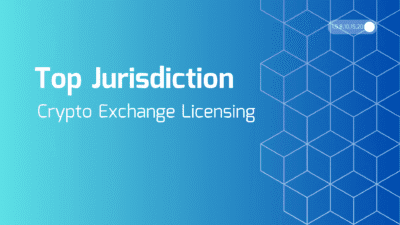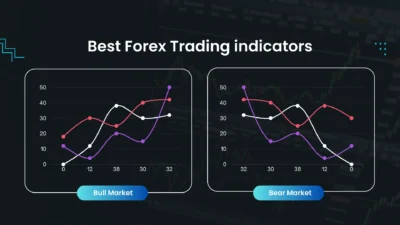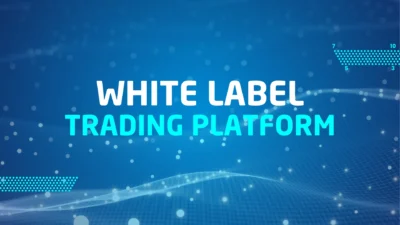Introduction: The Critical Need for Scalability in Crypto Exchanges
As cryptocurrency adoption accelerates globally, exchange operators face mounting pressure to scale their platforms efficiently. The transition from handling 10,000 to 100,000+ active traders requires careful planning across multiple dimensions – from infrastructure upgrades to liquidity solutions and regulatory compliance. This comprehensive guide explores proven strategies for scaling your cryptocurrency exchange while maintaining robust security and optimal performance.
Key Considerations for Exchange Scaling
| Scaling Factor | Current Solutions | Emerging Technologies | Implementation Timeline |
|---|---|---|---|
| Infrastructure | Dedicated servers, Cloud hosting (AWS/GCP) | Edge computing, Quantum-resistant cryptography | 3-6 months |
| Liquidity | Market makers, Liquidity aggregators | Cross-chain liquidity pools, AI-powered market making | 1-3 months |
| Security | Multi-sig wallets, MPC technology | Zero-knowledge KYC, AI fraud detection | Ongoing |
| Compliance | Automated KYC/AML | Real-time regulatory adaptation engines | 4+ months |
Building a Scalable Infrastructure Foundation
The foundation of any successful crypto exchange scaling begins with server architecture decisions. The ongoing debate between dedicated servers and cloud hosting solutions presents exchange operators with critical choices. While cloud platforms like AWS and GCP offer flexibility and ease of scaling, many high-volume exchanges are finding that hybrid models deliver the best balance – combining dedicated bare-metal servers for core trading functions with cloud-based solutions for less latency-sensitive components.
Database optimization represents another crucial consideration for growing exchanges. Modern platforms are increasingly implementing sharding and replication techniques to distribute query loads across multiple database instances. TimescaleDB has emerged as a particularly effective solution for handling time-series market data, while MongoDB’s flexible schema approach works well for user account management and other non-trading functions.
Liquidity Solutions for Sustainable Growth
No exchange can scale successfully without addressing liquidity challenges. The most forward-thinking platforms are implementing comprehensive liquidity solutions that combine multiple approaches. Many are integrating with established liquidity providers through APIs while simultaneously developing their own market-making capabilities. Cross-exchange liquidity aggregation has become particularly valuable, allowing smaller exchanges to tap into deeper order books across multiple platforms.
Order matching engine optimization remains critical for exchanges targeting professional traders. The shift toward high-frequency trading capabilities has led many exchanges to rebuild their matching engines using performance-oriented languages like Rust and Go. Some are even exploring hardware acceleration through FPGAs to achieve the microsecond-level execution speeds demanded by algorithmic trading firms.
Security and Compliance in a Scaling Environment
As exchanges grow, their security requirements become exponentially more complex. The industry has largely moved beyond basic hot wallet solutions, with most serious platforms now implementing multi-signature cold wallet storage systems. More recently, Multi-Party Computation (MPC) wallet technology has gained traction as a way to enhance security without sacrificing operational flexibility.
Regulatory compliance presents an equally challenging dimension of exchange scaling. The introduction of SEC Crypto Regulations in 2025 has forced many exchanges to completely rethink their compliance strategies. Automated KYC solutions have become table stakes, with the most advanced platforms now implementing real-time transaction monitoring systems that can detect suspicious patterns across multiple blockchain networks simultaneously.
Advanced Scaling Technologies and Architectures
The most innovative exchanges are exploring cutting-edge scaling solutions borrowed from blockchain development. Layer 2 scaling solutions, particularly Optimistic and ZK-Rollups, are being adapted for exchange use cases to reduce on-chain congestion and lower transaction costs. Some platforms are experimenting with sidechain implementations for specific functions like settlements or margin trading.
Microservices architecture has become the de facto standard for modern exchange development. By decomposing monolithic exchange software into discrete, independently scalable services, operators gain unprecedented flexibility in resource allocation. This approach also facilitates the integration of emerging technologies like tokenized real-world assets (RWAs) and cross-chain interoperability solutions.
Growth Strategies for Competitive Differentiation
Attracting institutional traders has become a key focus for exchanges looking to scale meaningfully. This requires developing specialized infrastructure that meets institutional requirements – from custody solutions that satisfy corporate governance standards to API interfaces that support complex algorithmic trading strategies. The introduction of sophisticated derivatives products, including perpetual swaps, has become particularly important for institutional adoption.
For exchanges that prefer not to build everything in-house, white-label solutions from established providers offer a compelling alternative. Platforms like ChainUp provide battle-tested exchange software that can be customized and branded, significantly reducing time-to-market for new entrants. Many operators begin with these solutions before gradually replacing components with proprietary development as their business scales.
Conclusion: The Path to Sustainable Growth
Successfully scaling a cryptocurrency exchange requires a holistic approach that balances technical infrastructure, liquidity solutions, security protocols, and regulatory compliance. The most successful operators view scaling as an ongoing process rather than a one-time challenge, continuously optimizing their platforms to handle increasing loads while maintaining superior user experiences.
As the industry matures, exchanges that invest in proper scaling solutions today will be best positioned to capitalize on the next wave of cryptocurrency adoption. Whether through custom development or white-label solutions, the key lies in building flexible architectures that can adapt to evolving market demands and technological advancements.
Contact us for Free Consultation
FAQ: How to Scale a Cryptocurrency Exchange Business
Scaling a cryptocurrency exchange involves overcoming several challenges, including:
– Liquidity shortages – Without sufficient liquidity, traders face slippage and poor order execution.
– High-frequency trading (HFT) demands – Low-latency matching engines are required to handle thousands of transactions per second.
– Security risks – DDoS attacks, API abuses, and wallet breaches can cripple an exchange.
– Regulatory compliance – KYC/AML requirements vary by jurisdiction and must be automated for scalability.
– Technical bottlenecks – Poor database architecture, slow APIs, and inefficient order-matching systems degrade performance.
To scale efficiently, exchanges should implement:
– Layer 2 solutions (Optimistic Rollups, ZK-Rollups) to reduce Ethereum gas fees and increase throughput.
– Sharding (for blockchain-based exchanges) to parallelize transaction processing.
– Microservices architecture for modular, independently scalable components.
– High-performance matching engines (written in Rust, Go, or C++) for low-latency trading.
– Geographic redundancy (using AWS, GCP, or bare-metal servers) to minimize downtime.
Liquidity is critical for scaling. Solutions include:
– Partnering with liquidity providers (market makers, institutional traders).
– Implementing automated market-making (AMM) models.
– Offering staking and yield farming to attract long-term deposits.
– Integrating cross-exchange liquidity aggregation via APIs.
Top hosting options include:
– AWS (Amazon Web Services) – Offers scalability, DDoS protection, and global CDN.
– Google Cloud (GCP) – High-performance computing with low-latency networking.
– Bare-metal servers – For ultra-low-latency trading (preferred by HFT exchanges).
– Hybrid cloud setups – Combining cloud flexibility with on-premise security.
To ensure 99.99% uptime:
– Use load balancers and auto-scaling to handle traffic spikes.
– Implement geographically distributed servers for redundancy.
– Deploy DDoS protection (Cloudflare, AWS Shield).
– Conduct stress testing before major updates.
Key security practices include:
– Multi-signature cold wallets for storing most funds offline.
– Hardware security modules (HSMs) for private key protection.
– Real-time fraud detection using AI/ML.
– Regular security audits (penetration testing, smart contract audits).
– Optimistic Rollups – Faster and cheaper but require a 7-day withdrawal delay for fraud proofs.
– ZK-Rollups – Near-instant finality with zero-knowledge proofs but higher computational costs.
Exchanges can integrate both to optimize speed and cost.
– Rust – High performance, memory safety (used by Solana, Polkadot).
– Go (Golang) – Efficient concurrency handling (used by Binance, KuCoin).
– C++ – Ultra-low latency for matching engines (used by derivatives exchanges).
– Use FPGA/ASIC-accelerated matching engines.
– Deploy colocation services near major liquidity hubs.
– Minimize API latency with WebSockets & FIX protocol.
– Trading fees (maker-taker models).
– Listing fees for new tokens.
– Margin trading & lending (interest revenue).
– Staking & DeFi integrations.
– Premium subscriptions & VIP programs.
Exchanges must comply with:
– KYC/AML regulations (MiCA in EU, FinCEN in US).
– Licensing (obtain MTF, VASP, or local crypto licenses).
– Tax reporting tools for user transparency.
– Centralized (CEX) – Easier to scale, better liquidity, but higher regulatory scrutiny.
– Hybrid (DEX + CEX) – Combines self-custody benefits with centralized speed.
– Referral & affiliate programs (like Binance’s commission structure).
– Gamification (trading competitions, NFT rewards).
– Copy trading & social trading features.
– 24/7 multilingual customer support.
– Allow cross-chain swaps (via bridges like LayerZero).
– Offer DeFi staking & yield aggregators.
– Support wallet integrations (MetaMask, WalletConnect).
– Never store all funds in hot wallets.
– Use multi-party computation (MPC) wallets.
– Conduct frequent security audits.











